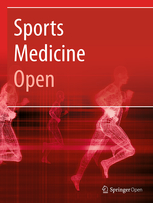 Objective: Overtraining syndrome (OTS) results from excessive training load without adequate recovery and leads to decreased performance and fatigue. The pathophysiology of OTS in athletes is not fully understood, which makes accurate diagnosis difficult. Previous studies indicate that alterations in the hypothalamus-pituitary-adrenal (HPA) axis may be responsible for OTS; however, the data is not conclusive. This study aimed to compare, through gold standard and exercise-independent tests, the response of the HPA axis in OTS-affected athletes (OTS group) to healthy physically active subjects (ATL group) and healthy non-active subjects (NCS group).
Objective: Overtraining syndrome (OTS) results from excessive training load without adequate recovery and leads to decreased performance and fatigue. The pathophysiology of OTS in athletes is not fully understood, which makes accurate diagnosis difficult. Previous studies indicate that alterations in the hypothalamus-pituitary-adrenal (HPA) axis may be responsible for OTS; however, the data is not conclusive. This study aimed to compare, through gold standard and exercise-independent tests, the response of the HPA axis in OTS-affected athletes (OTS group) to healthy physically active subjects (ATL group) and healthy non-active subjects (NCS group).
Methods: Selected subjects were evaluated for cortisol response to a 250-μg cosyntropin stimulation test (CST), cortisol and adrenocorticotropic hormone (ACTH) responses during an insulin tolerance test (ITT), and salivary cortisol rhythm (SCR).
Results: A total of 51 subjects were included (OTS, n = 14; ATL, n = 25; and NCS, n = 12). Cortisol response in the CST was similar among the three groups. Conversely, mean cortisol response during an ITT was significantly higher in ATL (21.7 μg/dL; increase = 9.2 μg/dL) compared to OTS (17.9 μg/dL; 6.3 μg/dL) and NCS (16.9 μg/dL; 6.0 μg/dL) (p ≤ 0.001; p = 0.01). Likewise, median ACTH response during an ITT was significantly higher in ATL (91.4 pg/mL; increase = 45.1 pg/mL) compared to OTS (30.3 pg/mL; 9.7 pg/mL) and NCS (51.4 pg/mL; 38.0 pg/mL) (p = 0.006; p = 0.004). For SCR, mean cortisol 30 min after awakening was significantly higher in ATL (500 ng/dL) compared to OTS (323 ng/dL) and NCS (393 ng/dL) (p = 0.004). We identified the following cutoffs that could help exclude or confirm OTS: cortisol level at 30 min after awakening (exclusion = > 530 ng/dL); cortisol response to ITT (exclusion = > 20.5 μg/dL; confirmation = < 17 μg/dL or increase < 9.5 μg/dL); and ACTH response (exclusion = > 106 pg/mL or increase > 70 pg/mL; confirmation = < 35 pg/mL and increase < 14.5 pg/mL).
Conclusions: The findings of the present study showed that healthy athletes disclose adaptions to exercises that helped improve sport-specific performance, whereas this sort of hormonal conditioning was at least partially lost in OTS, which may explain the decrease in performance in OTS.


